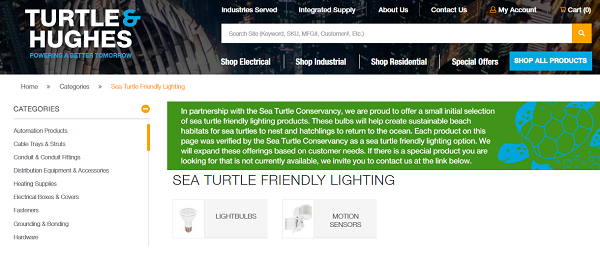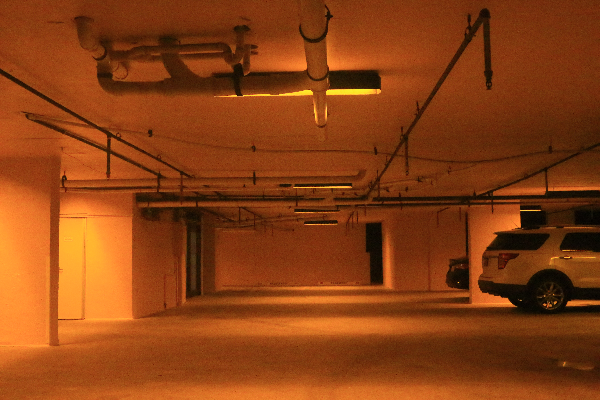Adult nesting and hatchling emergence usually take place at night. One of the main cues to navigate while on the beach has to do with the relatively darker dune creating dark silhouettes against the night sky, which screens out celestial light from the stars and moon, and the relatively brighter ocean, which reflects celestial light. The contrast between the darker dune and the brighter ocean is the main way sea turtles tell the difference between land and water. Hatchling sea turtles emerging from their nests use these same cues to move towards the water and away from land.
Artificial light can disrupt these natural nesting and emergence cues causing false crawls and disorientations. Artificial lights can deter adult females from nesting on the beach resulting in fewer nests and disorientations can often result in adult and hatchling mortalities.
For these reasons, minimizing light directly visible (coastal properties, flashlights, interior light, etc.) and indirectly visible (reflective light and sky glow) from the beach is important for the survival of the species. This starts with removing any unnecessary lights from a property that are used purely for decorative purposes and leaving handheld devices at home. All remaining lighting should follow the rules developed by the state of Florida, with help from scientists and technical advisors, to reduce the effects of artificial light on sea turtles.
The Florida Fish and Wildlife Conservation Commission (FWC) conducts rigorous testing of fixtures and bulbs and certifies them as wildlife friendly. Each certified product receives a certification number and is valid for two years. Once a product is certified, FWC includes it on its Certified Wildlife Lighting Website, which is broken up by application. The link to the website can be found here as well as by clicking on the photo of the website to the right. This guide is a great place to start when looking for wildlife friendly lighting.
Additional products outside of FWC’s list may also meet the criteria for wildlife friendly lighting. These criteria include: Keep it low, Keep it shielded, and Keep it long (wavelength). Keeping fixtures low to the ground ensures that a light will illuminate the area for its intended application – often for safety purposes. Shielding fixtures ensures that the light source will not be visible from the beach and will direct light downward. Utilizing long wavelength light at 560 nanometers or longer, which appears amber or red, will prevent sea turtle disorientations and protect human health. The wavelength output of a wildlife friendly luminaire can often be found on the product’s specification sheet.

STC has recently partnered with the electrical and industrial distribution company Turtle & Hughes to offer two long wavelength amber LED bulbs and a motion sensor on its e-commerce website. These bulbs can be purchased online and shipped directly to the consumer. The website can be found here and by clicking on the image to the right.
Unfortunately, most home improvement stores do not currently carry wildlife friendly fixtures and bulbs. If enough customers request that they carry them, however, it is possible that your local home improvement store could begin to carry them if enough demand is demonstrated. In the meantime, another avenue for purchasing wildlife friendly lighting is through a lighting distributor in your area.
Below is a list of distributors STC has worked with in the past. This is by no means an exhaustive list.

Sea Turtle Lighting Distributors
Frontier Lighting – Southwest Florida
Lighting By Lavonne – Panama City
Mathes Electric – Pensacola
Mayer Electric – Orlando, Tampa, Winter Haven
Rexel USA – United States
Sequel Electrical Supply – Fort Walton Beach, Pensacola, and Mobile, Alabama
Synergy – Southwest Florida
The Lighting Gallery Inc. – Spring Hill
United Lighting and Supply – Fort Walton Beach
To see what retrofitted properties look like, visit the Lighting and Dune Projects page.